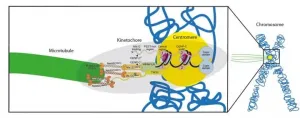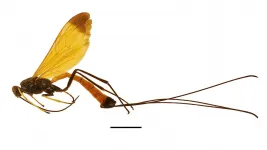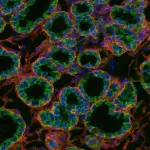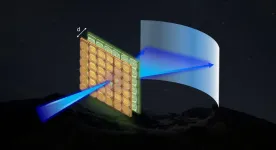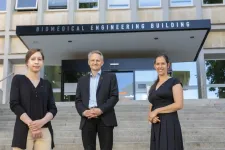INFORMATION:
Journal article
S. Hayakawa, M. La Cognata, L. Lamia, H. Yamaguchi, D. Kahl, K. Abe, H. Shimizu, L. Yang, O. Beliuskina, S. M. Cha, K. Y. Chae, S. Cherubini, P. Figuera, Z. Ge, M. Gulino, J. Hu, A. Inoue, N. Iwasa, A. Kim, D. Kim, G. Kiss, S. Kubono, M. La Commara, M. Lattuada, E. J. Lee, J. Y. Moon, S. Palmerini, C. Parascandolo, S. Y. Park, V. H. Phong, D. Pierroutsakou, R. G. Pizzone, G. G. Rapisarda, S. Romano, C. Spitaleri, X. D. Tang, O. Trippella, A. Tumino, and N. T. Zhang, "Constraining the Primordial Lithium Abundance: New Cross-Section Measurement of the 7Be + n Reactions Updates the Total 7Be Destruction Rate" Astrophysical Journal Letters,
Funding
This works was supported by JSPS KAKENHI (Grant Nos. 15K17631, 18K13556 and 19K03883). K. Y. C. and S. M. C. were supported by National Research Foundation of Korea (Nos. 2020R1I1A1A01065120, 2020R1A2C1005981, 2019K2A9A2A10018827, and 2016R1A5A1013277). D. K. would like to thank the UK STFC for support. G. G. K. acknowledges the supports by NKFIH (NN128072) and from the Janos Bolyai research fellowship of the Hungarian Academy of Sciences and from UNKP-20-5-DE-2 New National Excellence Program of the Ministry of Human Capacities of Hungary. The authors acknowledge Finanziamenti di Linea 2 and Starting Grant 2020 by University of Catania.
Useful links
Center for Nuclear Study
Istituto Nazionale di Fisica Nucleare - Laboratori Nazionali del Sud
Department of Physics, Sungkyunkwan University
Research contact information
Project Assistant Professor Seiya Hayakawa
Center for Nuclear Study, The University of Tokyo,
7-3-1 Hongo, Bunkyo-ku, Tokyo 113-0033, JAPAN
Email: hayakawa@cns.s.u-tokyo.ac.jp
Press Contact
Mr. Rohan Mehra
Division for Strategic Public Relations, The University of Tokyo
7-3-1 Hongo, Bunkyo-ku, Tokyo 113-8654, JAPAN
Email: press-releases.adm@gs.mail.u-tokyo.ac.jp
About the University of Tokyo
The University of Tokyo is Japan's leading university and one of the world's top research universities. The vast research output of some 6,000 researchers is published in the world's top journals across the arts and sciences. Our vibrant student body of around 15,000 undergraduate and 15,000 graduate students includes over 4,000 international students. Find out more at http://www.u-tokyo.ac.jp/en/ or follow us on Twitter at @UTokyo_News_en.
Closing the gap on the missing lithium
Researchers account for some of the lithium missing from our universe
2021-07-01
(Press-News.org) There is a significant discrepancy between theoretical and observed amounts of lithium in our universe. This is known as the cosmological lithium problem, and it has plagued cosmologists for decades. Now, researchers have reduced this discrepancy by around 10%, thanks to a new experiment on the nuclear processes responsible for the creation of lithium. This research could point the way to a more complete understanding of the early universe.
There is a famous saying that, "In theory, theory and practice are the same. In practice, they are not." This holds true in every academic domain, but it's especially common in cosmology, the study of the entire universe, where what we think we should see and what we really see doesn't always match up. This is largely because many cosmological phenomena are difficult to study due to inaccessibility. Cosmological phenomena are usually out of our reach because of the extreme distances involved, or often they have occurred before the human brain had even evolved to worry about them in the first place -- such is the case with the big bang.
Project Assistant Professor Seiya Hayakawa and Lecturer Hidetoshi Yamaguchi from the Center for Nuclear Study at the University of Tokyo, and their international team are especially interested in one area of cosmology where theory and observation are very misaligned, and that is the issue of the missing lithium, the cosmological lithium problem (CLP). In a nutshell, theory predicts that in the minutes following the big bang that created all matter in the cosmos, there should be an abundance of lithium around three times greater than what we actually observe. But Hayakawa and his team accounted for some of this discrepancy and have thus paved the way for research that may one day resolve it entirely.
"13.7 billion years ago, as matter coalesced from the energy of the big bang, common light elements we all recognize -- hydrogen, helium, lithium and beryllium -- formed in a process we call Big Bang nucleosynthesis (BBN)," said Hayakawa. "However, BBN is not a straightforward chain of events where one thing becomes another in sequence; it is actually a complex web of processes where a jumble of protons and neutrons builds up atomic nuclei, and some of these decay into other nuclei. For example, the abundance of one form of lithium, or isotope -- lithium-7 -- mostly results from the production and decay of beryllium-7. But it has either been overestimated in theory, underobserved in reality, or a combination of the two. This needs to be resolved in order to really understand what took place way back then."
Lithium-7 is the most common isotope of lithium, accounting for 92.5% of all observed. However, even though the accepted models of BBN predict the relative amounts of all elements involved in BBN with extreme accuracy, the expected amount of lithium-7 is around three times greater than what is actually observed. This means there is a gap in our knowledge about the formation of the early universe. There are several theoretical and observational approaches which aim to resolve this, but Hayakawa and his team simulated conditions during BBN using particle beams, detectors and an observational method known as the Trojan horse.
"We scrutinized more than ever before one of the BBN reactions, where beryllium-7 and a neutron decay into lithium-7 and a proton. The resulting levels of lithium-7 abundance were slightly lower than anticipated, about 10% lower," said Hayakawa. "This is a very difficult reaction to observe since beryllium-7 and neutrons are unstable. So we used deuteron, a hydrogen nucleus with an extra neutron, as a vessel to smuggle a neutron into a beryllium-7 beam without disturbing it. This is a unique technique, developed by an Italian group we collaborate with, in which the deuteron is like the Trojan horse in Greek myth, and the neutron is the soldier who sneaks into the impregnable city of Troy without tipping off the guards (destabilizing the sample). Thanks to the new experimental result, we can offer future theoretical researchers a slightly less daunting task when trying to resolve the CLP."
ELSE PRESS RELEASES FROM THIS DATE:
Manufacturing the core engine of cell division
2021-07-01
A wonder of nature
As a human cell begins division, its 23 chromosomes duplicate into identical copies that remain joined at a region called the centromere. Here lies the kinetochore, a complicated assembly of proteins that binds to thread-like structures, the microtubules. As mitosis progresses, the kinetochore gives green light to the microtubules to tear the DNA copies apart, towards the new forming cells. "The kinetochore is a beautiful, flawless machine: You almost never lose a chromosome in a normal cell!", says Musacchio. "We already know the proteins that constitute it, yet important questions about how the kinetochore works are still open: How does it rebuild itself during chromosome replication? ...
Dolichomitus meii wasp discovered in Amazonia is like a flying jewel
2021-07-01
Researchers at the Biodiversity Unit of the University of Turku, Finland, study insect biodiversity particularly in Amazonia and Africa. In their studies, they have discovered hundreds of species previously unknown to science. Many of them are exciting in their size, appearance, or living habits.
"The species we have discovered show what magnificent surprises the Earth's rainforests can contain. The newly discovered Dolichomitus meii wasp is particularly interesting for its large size and unique colouring. With a quick glance, its body looks black but glitters electric blue in light. Moreover, its wings are golden yellow. Therefore, you could say it's like a flying jewel," says Postdoctoral Researcher Diego Pádua from the Instituto Nacional ...
The sense of smell in older adults declines when it comes to meat, but not vanilla
2021-07-01
Contrary to what science once suggested, older people with a declining sense of smell do not have comprehensively dampened olfactory ability for odors in general - it simply depends upon the type of odor. Researchers at the University of Copenhagen reached this conclusion after examining a large group of older Danes' and their intensity perception of common food odours.
That grandpa and grandma aren't as good at smelling as they once were, is something that many can relate to. And, it has also been scientifically demonstrated. One's sense of smell gradually begins to decline from about the age of 55. Until now, it was believed that one's sense of smell broadly ...
Reducing plastic waste will require fundamental change in culture
2021-07-01
Plastic waste is considered one of the biggest environmental problems of our time. IASS researchers surveyed consumers in Germany about their use of plastic packaging. Their research reveals that fundamental changes in infrastructures and lifestyles, as well as cultural and economic transformation processes, are needed to make zero-waste shopping the norm.
96 percent of the German population consider it important to reduce packaging waste. Nevertheless, the private end consumption of packaging in Germany has increased continuously since 2009. At 3.2 million tons in 2018, the amount of plastic packaging waste generated by end consumers in Germany ...
Study with healthcare workers supports that immunity to SARS-CoV-2 is long-lasting
2021-07-01
One year after infection by SARS-CoV-2, most people maintain anti-Spike antibodies regardless of the severity of their symptoms, according to a study with healthcare workers co-led by the Barcelona Institute for Global Health (ISGlobal), the Catalan Health Institute (ICS) and the Jordi Gol Institute (IDIAP JG), with the collaboration of the Daniel Bravo Andreu Private Foundation. The results suggest that vaccine-generated immunity will also be long-lasting.
One of the key questions to better predict the pandemic's evolution is the duration of natural immunity. A growing number of studies suggest that most people generate a humoral ...
Eruption of the Laacher See volcano redated
2021-07-01
The eruption of the Laacher See volcano in the Eifel, a low mountain range in western Germany, is one of Central Europe's largest eruptions over the past 100,000 years. The eruption ejected around 20 cubic kilometers of tephra and the eruption column is believed to have reached at least 20 kilometers in height, comparable to the Pinatubo eruption in the Philippines in 1991. Technical advances in combination with tree remains buried in the course of the eruption now enabled an international research team to accurately date the event. Accordingly, the eruption of the Laacher See volcano occurred 13,077 years ago and thus 126 years earlier than previously assumed. This sheds new light on the climate history of the entire North ...
Extracellular matrix guides growth and function of epithelial cells
2021-07-01
Scientists at the University of Helsinki have found an essential factor from the extracellular matrix that regulates functionality of the breast tissue for instance during pregnancy.
Extracellular matrix (ECM) has previously been recognised as an important element for the growth of various epithelial cells, but rather as a scaffold. A new study shows that ECM can also regulate the function of epithelial cells.
Our tissues constitute of differentiated cell types, which perform specific tasks that are tightly controlled. Normal growth and functioning of tissues is possible only when the various differentiated cell types interact appropriately. Differentiation and function of breast epithelium is guided by a group of cells responsive for estrogen and progesterone hormones. In the recent ...
Beam steering angle expander with two liquid crystal polymeric diffractive optical elements
2021-07-01
Flat optics based on patterned liquid crystals (LCs) has recently received extensive research interest. Comparing with dielectric metasurfaces which are usually fabricated by sophisticated lithography process, LC polymer-based planar optics, owing to the self-assembly properties, can be fabricated through all-solution process. During the past decades, a variety of planar optical devices have been demonstrated based on geometric phase (also termed as Pancharatnum-Berry phase) manipulation. The total effective thickness of the device, including the underlying liquid crystal ...
Valvular heart disease: The underestimated risk of a common disease
2021-07-01
Hitherto, the development of valvular heart disease in patients with chronic heart failure has been underestimated and rarely treated. This is the finding of a study conducted at the Division of Cardiology within the Department of Medicine II at Vienna General Hospital and MedUni Vienna and published in the prestigious British Medical Journal (BMJ). Mitral regurgitation was often previously interpreted as part of the progression of heart failure rather than a treatable disease in its own right.
Mitral regurgitation is a disease, in which the valve between the left atrium and left ventricle starts to leak, so that blood refluxes with ...
Development of the world's first digital model of a cancer cell
2021-07-01
Computer models have been standard tools in basic biomedical research for many years. However, around 70 years after the first publication of an ion current model of a nerve cell by Hodgkin & Huxley in 1952, researchers at Graz University of Technology (TU Graz), in collaboration with the Medical University of Graz and the Memorial Sloan Kettering Cancer Center in New York, have finally succeeded in developing the world's first cancer cell model, thus launching "an essential tool for modern cancer research and drug development," reports a delighted Christian Baumgartner. The head of the Institute of Health Care Engineering with European Testing ...
LAST 30 PRESS RELEASES:
New expert guidance urges caution before surgery for patients with treatment-resistant constipation
Solar hydrogen can now be produced efficiently without the scarce metal platinum
Sleeping in on weekends may help boost teens’ mental health
Study: Teens use cellphones for an hour a day at school
After more than two years of war, Palestinian children are hungry, denied education and “like the living dead”
The untold story of life with Prader-Willi syndrome - according to the siblings who live it
How the parasite that ‘gave up sex’ found more hosts – and why its victory won’t last
When is it time to jump? The boiling frog problem of AI use in physics education
Twitter data reveals partisan divide in understanding why pollen season's getting worse
AI is quick but risky for updating old software
Revolutionizing biosecurity: new multi-omics framework to transform invasive species management
From ancient herb to modern medicine: new review unveils the multi-targeted healing potential of Borago officinalis
Building a global scientific community: Biological Diversity Journal announces dual recruitment of Editorial Board and Youth Editorial Board members
Microbes that break down antibiotics help protect ecosystems under drug pollution
Smart biochar that remembers pollutants offers a new way to clean water and recycle biomass
Rice genes matter more than domestication in shaping plant microbiomes
Ticking time bomb: Some farmers report as many as 70 tick encounters over a 6-month period
Turning garden and crop waste into plastics
Scientists discover ‘platypus galaxies’ in the early universe
Seeing thyroid cancer in a new light: when AI meets label-free imaging in the operating room
Neutrophil-to-lymphocyte ratio may aid risk stratification in depressive disorder
2026 Seismological Society of America Annual Meeting
AI-powered ECG analysis offers promising path for early detection of chronic obstructive pulmonary disease, says Mount Sinai researchers
GIMM uncovers flaws in lab-grown heart cells and paves the way for improved treatments
Cracking the evolutionary code of sleep
Medications could help the aging brain cope with surgery, memory impairment
Back pain linked to worse sleep years later in men over 65, according to study
CDC urges ‘shared decision-making’ on some childhood vaccines; many unclear about what that means
New research finds that an ‘equal treatment’ approach to economic opportunity advertising can backfire
Researchers create shape-shifting, self-navigating microparticles
[Press-News.org] Closing the gap on the missing lithiumResearchers account for some of the lithium missing from our universe

